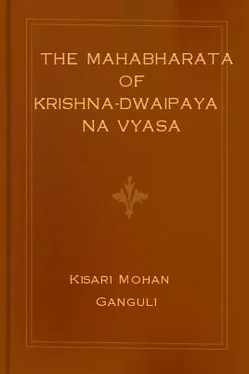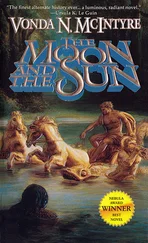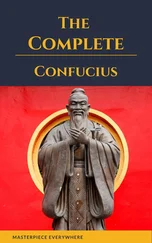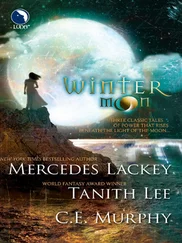Kisari Mohan Ganguli - The Mahabharata of Krishna-Dwaipayana Vyasa
Здесь есть возможность читать онлайн «Kisari Mohan Ganguli - The Mahabharata of Krishna-Dwaipayana Vyasa» весь текст электронной книги совершенно бесплатно (целиком полную версию без сокращений). В некоторых случаях можно слушать аудио, скачать через торрент в формате fb2 и присутствует краткое содержание. Издательство: ManyBooks.net, Жанр: на английском языке. Описание произведения, (предисловие) а так же отзывы посетителей доступны на портале библиотеки ЛибКат.
- Название:The Mahabharata of Krishna-Dwaipayana Vyasa
- Автор:
- Издательство:ManyBooks.net
- Жанр:
- Год:неизвестен
- ISBN:нет данных
- Рейтинг книги:3 / 5. Голосов: 1
-
Избранное:Добавить в избранное
- Отзывы:
-
Ваша оценка:
- 60
- 1
- 2
- 3
- 4
- 5
The Mahabharata of Krishna-Dwaipayana Vyasa: краткое содержание, описание и аннотация
Предлагаем к чтению аннотацию, описание, краткое содержание или предисловие (зависит от того, что написал сам автор книги «The Mahabharata of Krishna-Dwaipayana Vyasa»). Если вы не нашли необходимую информацию о книге — напишите в комментариях, мы постараемся отыскать её.
The Mahabharata of Krishna-Dwaipayana Vyasa — читать онлайн бесплатно полную книгу (весь текст) целиком
Ниже представлен текст книги, разбитый по страницам. Система сохранения места последней прочитанной страницы, позволяет с удобством читать онлайн бесплатно книгу «The Mahabharata of Krishna-Dwaipayana Vyasa», без необходимости каждый раз заново искать на чём Вы остановились. Поставьте закладку, и сможете в любой момент перейти на страницу, на которой закончили чтение.
Интервал:
Закладка:
149. The sense seems to be this: one who proceeds, on a journey must provide oneself with the necessary means, otherwise one is sure to feel discomfort or meet with even destruction. So, in the journey of life, one must provide oneself with knowledge as the means. One may then avoid all discomfort and danger. Action does not constitute the proper means. It may or may not produce fruits.
150. i.e., one should not care for the external.
151. i.e., one need not do acts enjoined by the scriptures after one has attained to knowledge which is the highest seat.
152. The sense is this: riding on a car may not always be comfortable. As long as there is a car path, one should travel on one's car. If, however, the road be such as not to be fit for a car to proceed along it, one should avoid a car in going over it, for the car instead of conducing to comfort, would, on such a path, be productive of only discomfort.
153. i.e., first action with desire: then action without desire; then knowledge, according to Arjuna Misra. Nilakantha explains that action is first, then Yoga; then the state of Hansa or Paramahansa.
154. Katu is not bitter but pungent or sharp, as that which is attached to chillies.
155. These are the notes of the Hindu Gamut.
156. The understanding operates on what is placed before it by the mind. The understanding, therefore, is, as it were, the lord exercising power or sovereignty, being served by the mind.
157. Sarvan srijati i.e., creates all things by attaining to the condition of the universal cause, for the unmanifest is the universal cause. Between such a one and the Supreme Soul there is no difference. Even this is said in the last sentence.
158. The man who reads the book called Veda is not truly conversant with the Veda. He, however, who knows Kshetrajna, is regarded as truly knowing the Veda.
159. The argument is that Mrityu or death being of two syllables, the correspondence is justifiable between it and Mama or mineness which also is of two syllables. So in the case of Brahman and na-mama. Of course, what is meant by mineness being death and not-mineness being Brahman or emancipation, cannot be unintelligible to one who has carefully read the preceding sections.
160. i.e., the five great elements, four organs of knowledge with mind, and the four organs of action.
161. The word Purusha here is used in the sense of dehabhimani Jiva or individual self with consciousness of body. True knowledge destroys this condition of Jiva, for the man of knowledge identifies himself with the universe and thereby assimilates himself to Brahman. By eaters of Amrita are meant they who never take any food without offering portions thereof to the deities, Pitris, and guests. Of course, Yogins of piety are implied by it.
162. Purusha here implies Jiva divested of consciousness of body.
163. The meaning is this: in a dream what is seen is all unreal. So, when tranquillity has been attained, all the surroundings become unreal. Nilakantha gives a slightly different interpretation; it is this: when tranquillity has been attained, the Soul lives without attachment to the body and all external objects. Indeed, the Soul then lives completely in itself even as it works in course of a dream.
164. The sense is that they behold all worldly objects, present, past and future, which are, of course, due to development of previous causes.
165. This line is rather obscure. The sense seems to be this: no one can know the Supreme Deity if it is not the latter's pleasure to be known. One, therefore, understands Him in exactly that measure in which it is His pleasure to be known.
166. Krishna's father Vasudeva is maternal uncle. Yudhishthira asks Krishna to worship Vasudeva and Valadeva on his behalf, i.e., he charges Krishna to bear to them a message of respect and love from him.
167. The city of Hastinapura is sometimes called Nagapura, both Hasti and Naga being words expressive of the elephant. 'The city called after the elephant' is the usual description of the Kuru capital.
168. Mahyam is equal to 'mam uddisya' i.e., referring to my divine nature.
169. An ascetic loses his penances by cursing another rightly or wrongly. Hence, forgiveness was always practised by the Brahmanas who were ascetics. A Brahmana's strength consisted in forgiveness. The more forgiving he was, the more powerful he became.
170. The first asat or non-existent refers to such objects as the horns of the hare. The second, viz., sadasat, or existent and non-existent refers to such objects as exist and meet with destruction. Sadasat param or that which transcends the existent and non-existent, refers to the unmanifest. The universe consists of these three. All this is from Vasudeva.
171. To this day preceptors in India have to feed and teach their disciples without any pecuniary compensation. In fact, the sale of knowledge has been strictly forbidden. Pupils, however, after completing their studies, had to give the final Dakshina which varied according to their means. The kings and princes of India thought themselves honoured if solicited by pupils in search of the final Dakshina. What Gautama says here is that the object of the final present is to gratify the preceptor. He (Gautama), however, had already been gratified with the dutiful conduct of Utanka. There was no need, therefore, of any present.
172. These words of the king are intended to be reported to his queen who would understand the allusion. The sense is this: cursed by Vasishtha, I have become a cannibal. My condition is intolerable. By this gift of the ear-rings to a deserving Brahmana, much merit may arise. That merit may relieve me.
173. This also is an allusion to the dreadful curse of Vasishtha. The king refers to Madayanti as his only refuge. She may save him by doing an act or special merit, viz., giving away her costly ear-rings to a truly deserving Brahmana.
174. The sense is this: a Brahmana is never loose of tongue. He is truthful. Hence, having passed my word to thee about my return, thou mayst be sure that I would keep my word. One, again, that acts improperly towards a friend, comes to be regarded as a thief. By this, Utanka reminds the king that he should not inflict any wrong on him by carrying out his intention of eating him up.
175. Vilwa is the Aegle marmalos.
176. Chamu here is used in a general sense, viz., a division. Of course it stands for an Akshauhini.
177. Kavi or Kavya is another name of Sukra, the preceptor of the Daityas.
178. Krishna implies Vyasa here. The great Rishi was called 'the island-born Krishna'.
179. The commentator explains that by the constellation Dhruba is implied Rohini and the Uttaras numbering three. Sunday, again is called the Dhruba-day.
180. Agnivesya was another name of Dhaumya.
181. Three roads running north to south, and three running cast to west and intersecting the former, are the six roads that are directed to be laid out in pitching encampments. Those give nine squares with two boundary lines at right angles with each other.
182. Karaputa is made up of two wooden chests united with each other by chains or cords and intended to be borne by camels and bullocks.
183. The first line of 17 is exceedingly terse. Literally rendered, it runs,--'Each vessel was united with another, and became half the (total) weight slung on balance.'
184. Vilava is Arjuna.
185. Before performing any rite or act of a grave nature, Hindus are required to touch water or perform what is called the 'achamana'. A little quantity of water is taken on the palm of the right hand, and with it are touched the lips, the nostrils, the ears, and the eyes.
186. The abode of Vaisravana is called Alaka. Vaisravana is, of course, Kuvera, the lord of treasures, friend of Mahadeva, and chief of the Yakshas.
Читать дальшеИнтервал:
Закладка:
Похожие книги на «The Mahabharata of Krishna-Dwaipayana Vyasa»
Представляем Вашему вниманию похожие книги на «The Mahabharata of Krishna-Dwaipayana Vyasa» списком для выбора. Мы отобрали схожую по названию и смыслу литературу в надежде предоставить читателям больше вариантов отыскать новые, интересные, ещё непрочитанные произведения.
Обсуждение, отзывы о книге «The Mahabharata of Krishna-Dwaipayana Vyasa» и просто собственные мнения читателей. Оставьте ваши комментарии, напишите, что Вы думаете о произведении, его смысле или главных героях. Укажите что конкретно понравилось, а что нет, и почему Вы так считаете.












